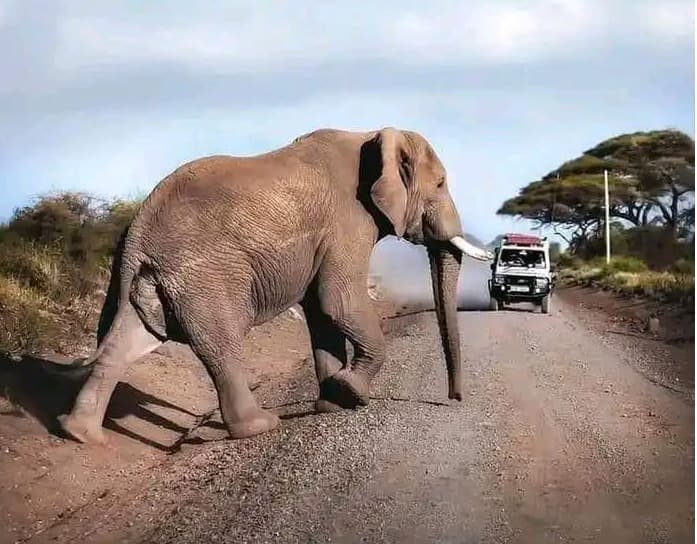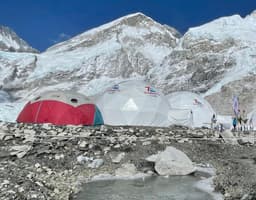I have been in the tourism field since 2006, and often I find little confusion among the tourists about Kathmandu. So I would like to start this travel guide with the name of Kathmandu. Actually, Kathmandu identifies four different meanings, which are:
- Kathmandu as a District
- Kathmandu as a Valley
- Kathmandu as a Metro City (Municipality)
- Kathmandu as a Capital City
Exploring Kathmandu: The Heart of Nepal
Kathmandu, the capital city of Nepal, is a vibrant blend of ancient history, rich culture, and modern development. Known for its unique charm and the convergence of diverse cultures, Kathmandu is the gateway to exploring the Himalayas and a hidden gem of historical and religious sites. Let’s go quite deep into the various components that make up this fascinating region.
-
Kathmandu District
Kathmandu District is one of the 77 districts of Nepal and forms the central part of the Kathmandu Valley. It covers an area of approximately 395 square kilometers and is bordered by several other districts, including Bhaktapur and Lalitpur. As the political and cultural hub of the country, Kathmandu District is home to numerous significant landmarks, government offices, and cultural heritage sites.
-
Kathmandu Valley
The Kathmandu Valley is a bowl-shaped valley located in central Nepal, encompassing three major cities: Kathmandu, Patan (Lalitpur), and Bhaktapur. This valley, which was once a large lake, is rich in history and culture, boasting seven UNESCO World Heritage Sites. The valley has been a center of trade and culture for centuries, attracting merchants, pilgrims, and travelers from all over the world.
Key features of the Kathmandu Valley include:
- Historical Sites: The valley is home to ancient palaces, temples, and stupas.
- Cultural Melting Pot: A mix of Hindu and Buddhist traditions can be seen throughout the valley.
- Scenic Beauty: Surrounded by green hills and with views of the Himalayan range, the valley offers breathtaking landscapes.
-
Kathmandu Metropolitan City
Kathmandu Metropolitan City, often simply referred to as Kathmandu City, is the largest city in Nepal and serves as the capital. It is the economic, political, and cultural heart of the country. The city is a bustling urban center where modernity meets tradition.
Highlights of Kathmandu Metropolitan City include:
- Durbar Square: Kathmandu Durbar Square, a UNESCO World Heritage Site, is a complex of palaces, courtyards, and temples.
- Thamel: The city's tourist hub, known for its vibrant streets filled with shops, restaurants, and hotels.
- Cultural Festivals: The city hosts numerous festivals such as Indra Jatra, Dashain, and Tihar, reflecting its rich cultural heritage.
-
Key Areas within Kathmandu
- Thamel: Known as the tourist district, Thamel is a lively area filled with shops, restaurants, and hotels. It is the perfect place to start your journey in Kathmandu.
- Bouddha: Home to the magnificent Boudhanath Stupa, this area is a center of Tibetan culture in Kathmandu.
- Pashupatinath: This area is renowned for the sacred Pashupatinath Temple, a major Hindu pilgrimage site.
World Heritage Zones in Kathmandu
The whole Kathmandu valley has been considered as a World Heritage Site by the UNESCO (United Nations Educational, Scientific, and Cultural Organization), where seven structures are considered to name it, showcasing the rich cultural, historical and architectural heritage.
The World Heritage zone or all these seven heritage sites can be explored in just a day or in three days, which lets you explore all the hidden treasures of the valley in depth.
Many of the structures within these zones were damaged in the earthquakes of 2015 and repairs and reconstruction is underway. Many of them are already repaired and few are under reconstruction as it requires typical carvings and materials to repair them well.
Seven World Heritage Sites in Kathmandu
For your easy understanding, you can count them in this style:
- Ancient Palaces – 3 numbers Bhaktapur Durbar Square, Kathmandu Durbar Square and Patan Durbar Square
- Hindu Shrines – 2 numbers Pashupatinath and Changunarayan
- Buddhist Shrines – 2 numbers Swayambhunath (Monkey Temple) and Bouddhanath
Discovering the World Heritage Zone in Kathmandu
Nestled in the heart of the Kathmandu Valley, a treasure trove of culture, history, and architectural marvels awaits you. The World Heritage Zone in Kathmandu, recognized by UNESCO, encompasses seven groups of monuments and buildings which showcase the rich cultural heritage of the area. Join Shepherd Holidays as we take you on a journey through this fascinating region, where ancient traditions and vibrant culture thrive.
-
Kathmandu Durbar Square
Kathmandu takes its name from a centuries-old structure, Kasthamandap, that is located in Kathmandu Durbar Square. The name humbly translates to wooden pavilion and the structure formerly sat majestically in a busy square, surrounded by public and vehicle traffic, vegetable vendors as well as other regal temples.
Very close to the popular touristic place, Thamel, the Kathmandu Durbar Square is a stunning complex of palaces, courtyards, and temples. Once the royal residence, the square is now a vibrant hub of activities where locals and tourists alike gather to admire the intricate wood carvings and ancient structures. Key highlights include the Hanuman Dhoka Palace, Kumari Ghar (the house of the Living Goddess), and the magnificent Taleju Temple.
-
Swayambhunath Stupa (Monkey Temple)
Perched atop a hill, Swayambhunath Stupa is especially revered by Newar Buddhists. Newar are an indigenous ethnicities in the Kathmandu valley. The hilltop offers panoramic views of the Kathmandu Valley. Known also as the Monkey Temple due to the playful monkeys that inhabit the area, this site is one of the holiest Buddhist stupas in Nepal. The stupa's iconic white dome and glittering golden spire are adorned with the eyes of Buddha, symbolizing wisdom and compassion.
-
Pashupatinath Temple
Pashupatinath Temple is a sacred site for Hindus around the globe, and the home to a number of ascetics who have renounced secular life. The Temple is dedicated to Lord Shiva, Pashupati is one of 1,008 names of Shiva and invoked as Nepal’s divine benefactor as well as a guardian of all animals, but still there are other temples of numerous other gods and goddesses. Located on the banks of the Bagmati River, this temple complex is a sprawling collection of shrines, temples, and ghats where people perform the cremation on the bank of the holy rever, Bagmati.
It is particularly vibrant during the Maha Shivaratri festival, attracting thousands of devotees throughout the world. The evening aarti (worship ceremony) along the riverbank is a mesmerizing experience not to be missed, which gives you extra peace and joy in your mind.
-
Boudhanath Stupa
Boudhanath or Bauddhanath Stupa is located on the northeast edge of Kathmandu in a section of the city, largely populated by people of Tibetan descent. One of the largest stupas in the world, Boudhanath, is a beacon of Tibetan Buddhism. The stupa is especially revered by Vajrayana Buddhists and receives visitors from around the world. The monument dates to the early 7th century C.E. and is roughly 121 ft (37 m) high. The massive mandala makes it one of the most imposing structures in the Kathmandu Valley.
Every day, thousands of devotees circumambulate (called kora in Tibetan) the stupa, spinning prayer wheels and chanting mantras, creating an atmosphere of serene devotion, in a clockwise fashion, a deed that is said to earn merit and reduce suffering. The area is especially active in evenings when the moon is full. More than a dozen extravagant Tibetan monasteries thrive in the surrounding area, representing the four main Tibetan Buddhist lineages of Gelug, Nyingma, Sakya, Kagyu. The surrounding area is also filled with shops and restaurants offering Tibetan cuisine.
-
Patan Durbar Square
Located in the city of Lalitpur, in the southern part of the Kathmandu valley, Patan Durbar Square is renowned for its exquisite architecture and fine arts. The square is a masterpiece of Newar craftsmanship, featuring temples, idols, and intricate carvings. The Patan Museum, housed within a former royal palace, provides a deeper insight into the history and culture of the region, showcasing a vast collection of artifacts and religious objects, so this Museum is highly recommended to all visitors to this city. Patan’s narrow streets leave much to be discovered.
-
Bhaktapur Durbar Square
Bhaktapur Durbar Square is located on the eastern fringe of the valley, about 15 km from central Kathmandu, it is known as the city of devotees. This square is a living museum, where time seems to have stood still. The 55-Window Palace, Vatsala Temple, and Nyatapola Temple are just a few of the architectural gems you'll encounter. Wander through the cobbled streets, and you'll find traditional pottery, woodwork, and local delicacies.
In addition to the aforementioned World Heritage Zone of Bhaktapur Durbar Square, the whole town maintains a timeless mystique that is reminiscent of Old World civilization and provides a serene escape from the madding crowds of Kathmandu.
-
Changu Narayan Temple
The final, seventh World Heritage Site on the northeast fringes of the valley is Changu Narayan Temple. Perched on a hilltop north of Bhaktapur, Changu Narayan Temple is the oldest Hindu temple in the Kathmandu Valley, dating back to the 4th century. Dedicated to Lord Vishnu, whose ten incarnations are molded in its struts, and the temple is a showcase of ancient stone, wood, and metal carvings. The temple's peaceful setting offers a tranquil escape and a glimpse into Nepal's deep-rooted religious history.
Entry Fees at the World Heritage Sites in Kathmandu Valley
To explore all these centuries-old landmarks requires an entrance fee for tourists/foreign national.
1. Swayambhunath Temple - Nrs 200/person
2. Kathmandu Durbar Square - Nrs 1,000/person
3. Patan Durbar Square - Nrs 1,000/person
4. Bhaktapur Durbar Square - Nrs 1,800/person
5. Changunarayan Temple - Nrs 400/person
6. Bauddhanath Stupa - Nrs 400/person
Tips for Visiting the World Heritage Zone
- Respect Local Customs: When visiting temples and religious sites, dress modestly and remove your shoes before entering.
- Hire a Guide: To fully appreciate the historical and cultural significance of each site, consider hiring a knowledgeable guide.
- Stay Hydrated: The Kathmandu Valley can get quite warm, so carry water and stay hydrated.
- Support Local Artisans: Purchase souvenirs from local artisans to support the community and take home unique mementos.
Join Shepherd Holidays as we take you on a journey through this fascinating region, where ancient traditions and vibrant culture thrive. Kathmandu, with its rich tapestry of history, culture, and modernity, offers a unique experience for every traveler. Whether you are exploring the ancient temples and palaces, wandering through the vibrant streets of Thamel, or enjoying the serene beauty of the surrounding hills, Kathmandu is sure to leave an indelible mark on your heart.





